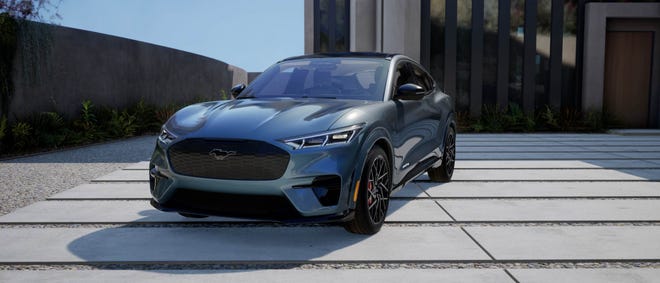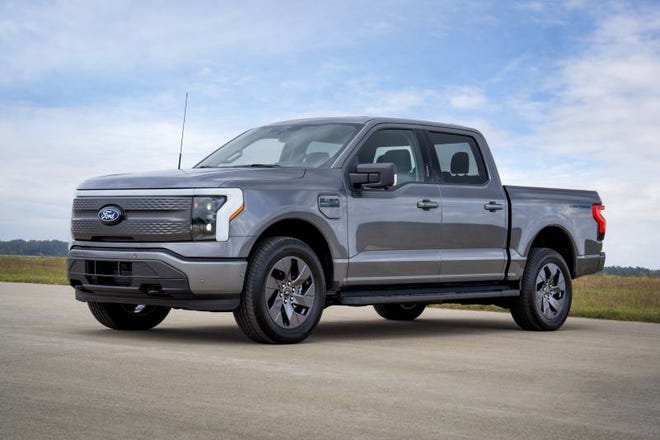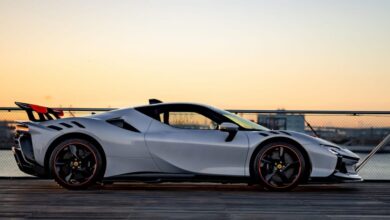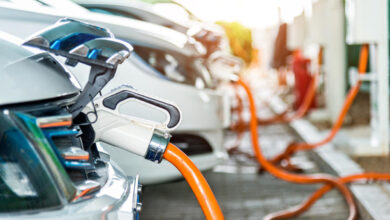Lease or buy an EV? They’re getting better fast. What to consider
I’d lease, not buy, if I were shopping for an electric vehicle today.
Not because I doubt EVs’ benefits, convenience or reliability, but because volatile prices and evolving technology make them likely to improve faster — maybe a lot faster — than we’re used to with the mature technology and economics of internal combustion engines, or ICE.
As appealing as many of today’s EVs are, there’s a good chance one with longer range, better features, a more appealing price — or all of the above — will be available in a time frame closer to the expiration of a 36-month lease than the eight-plus years many buyers keep a new car or truck.
“Everything about EVs is moving very quickly,” said Alex Knizek, Consumer Reports’ chief of EV testing. “What you buy today may be obsolete tomorrow.”
That’s not to say any EV bought today won’t work tomorrow, next year, or probably 10-20 years from now. It does mean you may be able to get a better vehicle soon, for the same price, maybe even less.
On top of that, S&P Global Mobility analyst Stephanie Brinley says owning an EV is in many ways a new lifestyle, from easy charging at home to planning long trips around charger availability along the way.
“Leasing is an opportunity to find out if it works for you,” she said.

‘Unexpectedly under water’
Consumers like predictability, but with EVs, everything’s a moving target: Price, capability, residual value.
In just the last 60 days:
- Market leader Tesla slashed prices, forcing other automakers to follow suit. Tesla price cuts became almost routine in 2023 as the automaker responded to growing competition.
- Ford announced faster charging and longer range for the 2024 Mustang Mach-E.
- Ford cut F-150 Lightning prices up to $5,500, angering some early buyers.
- Chevrolet dropped prices of its new Blazer EV by as much as $6,520.
“It’s a lot of mental calculus,” Cox Automotive Erin Keating said. “Some Tesla owners found themselves unexpectedly under water.”
Beyond pricing volatility, Keating added that leasing makes some EVs eligible for tax credits not available with an outright purchase.
The number of EVs eligible for those credits will increase every year as automakers scramble to source batteries in countries the U.S. considers reliable strategic and business partners.
That will make more EVs affordable, increasing the number of models shoppers can consider.
More:The 2024 Chevy Blazer EV might put a charge into GM’s ambitious electric vehicle plan
More:I tested one of GM’s first highway EV fast-chargers. Here’s how it went.
More:The 2024 Chevy Blazer EV might put a charge into GM’s ambitious electric vehicle plan
‘We haven’t even decided which plug to use’
Battery technology — a key to EV range and convenience — is also evolving rapidly — around 8% annually, according to auto writer and EV expert John Voelcker.
Ford, for instance, just added a battery with a new, less expensive chemistry to the Mach-E.
“Charging, batteries and range are the big topics,” Consumer Reports’ Knizek said. “Battery technology is changing rapidly, from chemicals to physical packages and electronic controls. The 2020 model of a vehicle may go 190 miles on a charge, while the 2022 can go 225.

“Consider the switch to Tesla’s charging system,” he added. “That’s a fundamental change in powertrain technology. We haven’t even decided which plug to use yet.”
Beyond that, EV makers regularly add new features. Some come as over-the-air software updates, but others will be rolled out to increase the appeal of next year’s model. That’s true of ICE vehicles, too, but the range of improvement to EVs may be wider.
Battery performance and longevity are also open questions. California, which sets the pace for nearly all EV policy in the U.S., requires a 10-year/150,000-mile warranty, but there’s no generally accepted way to measure a used EV battery’s efficiency and future performance. That’ll be a determining factor in the value of a used EV, a major concern if you own an EV, somebody else’s problem if you leased.
“I think some delay in EV uptake is people waiting for improvements in batteries, range and charging,” Keating said. “Customers still need to see battery-lifecycle and repair-cost trends.”

The case for keeping your EV
On the other hand, it’s hard to beat not having a car payment. EVs are so tech-laden it’s easy to think of them like a mobile phone, where new features trained many owners to trade up every couple of years.
“We’ve so conditioned people to behave on the evolutionary timetable of cellphones that it’s hard to wrap your head around the idea of buying something and using it for seven to 10 years, ” Keating said, “but that’s what a vehicle is for most people.”
And a lot of those people will probably consider missing out on a few new features, a fair trade-off for not writing a big check every month.
Maybe EVs aren’t that different from ICE vehicles after all.
Contact Mark Phelan: 313-222-6731 or mmphelan@freepress.com. Follow him on Twitter @mark_phelan. Read more on autos and sign up for our autos newsletter. Become a subscriber.



